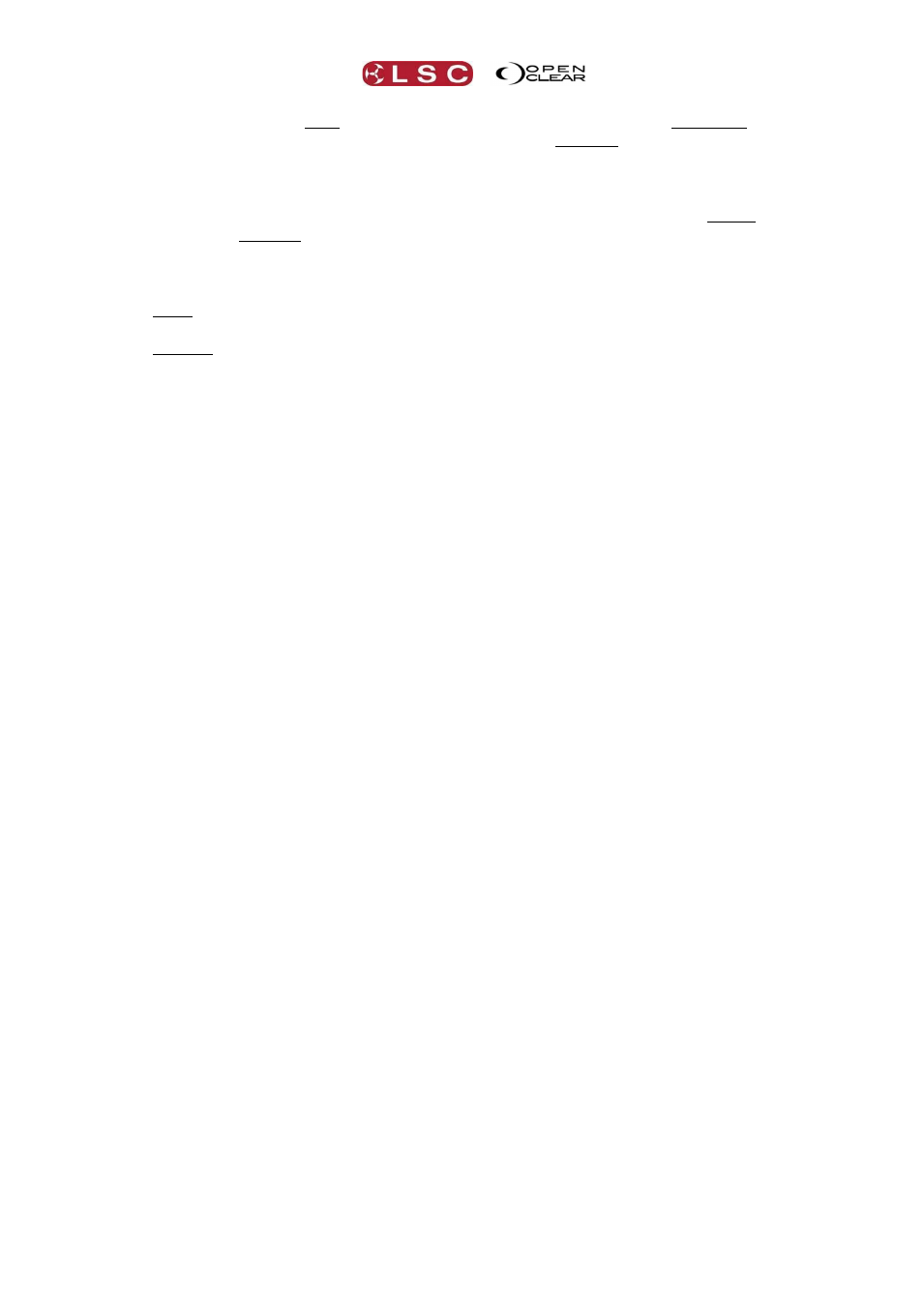3 advantages of tracking, 4 disadvantages of tracking – LSC Lighting CLARITY LX Series v.1 User Manual
Page 249

Clarity
Operating Concepts & Terminology
Operator Manual
Page 239
Select fixtures and grab them in a programmer by adjusting their attributes for the
desired look. All of these attributes have now been touched.
Record the look as a cue in a new cue-list. The first cue in the cue-list will contain the
values of all attributes that have been touched by the programmer. After the cue is
recorded, no attributes have been touched.
Adjust attributes in the programmer for the next look. Now only these varied attributes
have been touched.
Record the look as the next cue in the cue-list. With the default record settings, this cue
will only contain the touched values.
Repeat until all cues are recorded.
Clear the programmer.
Playback the cue-list.
Release playback when finished.
42.7.3 Advantages of Tracking
The major advantage of tracking is that if a change (edit) has to be made, only the initial cue
that contained the hard values has to be changed and the change will then track through to all
subsequent cues.
For example:
A cue-list containing 50 cues is recorded. The first cue sets the colour of the cyclorama (cyc) to
red and it remains unchanged for the entire cue-list. Cues 2 to 50 make other changes but
never affect the colour of the cyc. You now want to change the cyc colour to blue. This is
quickly achieved by editing cue 1 and changing the colour. There is no need to edit the other
49 cues because the values in cue 1 will track through to cue 50. You then decide that half way
through the cue-list you want to change the cyclorama to green. You edit cue 25 and change
the colour. When the cue-list is played back, cue 1 sets the cyc to red and it remains
unchanged until cue 25 where it changes to green. It then remains green right through to cue
50.
Tracking also saves memory space because only changes are saved.
42.7.4 Disadvantages of Tracking
Tracking can be confusing and frustrating unless it is fully understood. Remember that tracking
does not necessarily give you a “what you see is what you get” result. The cues that you record
only contain changes and not the entire look.
For example, the look on stage when you record a cue might not be coming entirely from the
programmer. It might be that certain fixtures are getting their colour values from a playback.
When the cue-list is played back, the colour that you saw on stage when the cue was recorded
might not be reproduced when the cue is played back.
A common mistake is to create a look, record it as a cue and then clear the programmer. The
next look is then created in the programmer and recorded as the next cue in the cue-list. The
programmer is cleared again and the process repeated. The problem with this method is that the
sequence of events that you observed on stage as you recorded the cue-list will not necessarily
be reproduced when the cue-list is played back in tracking mode. This is because every time you
cleared the programmer, you set all selected fixtures to their default values (or to a playbacks
value if they were previously controlled by a playback). Typically you will see the fixtures blackout
when the programmer is cleared.
When you create and record the next cue, you are not recording new values for the previously
cleared fixtures unless you specifically grab them in the programmer and set a value. They go
off on stage but this off state is not in the programmer so it will not be recorded in the next cue.
When the cue-list is played back in tracking mode, each cue does not replace the attribute values
from the previous cues unless there are specific values for those attributes in the new cue.
Therefore, a fixture that has intensity in a cue will stay on when the next cue is played back
unless it has been told to turn off (or go to a different level) in that cue.
For example:
Record a simple cue-list of 3 cues with a single dimmer turned on in each cue.
Select dimmer 1 and set to 100%.
Record cue 1.
Clear programmer, dimmer 1 fades off.